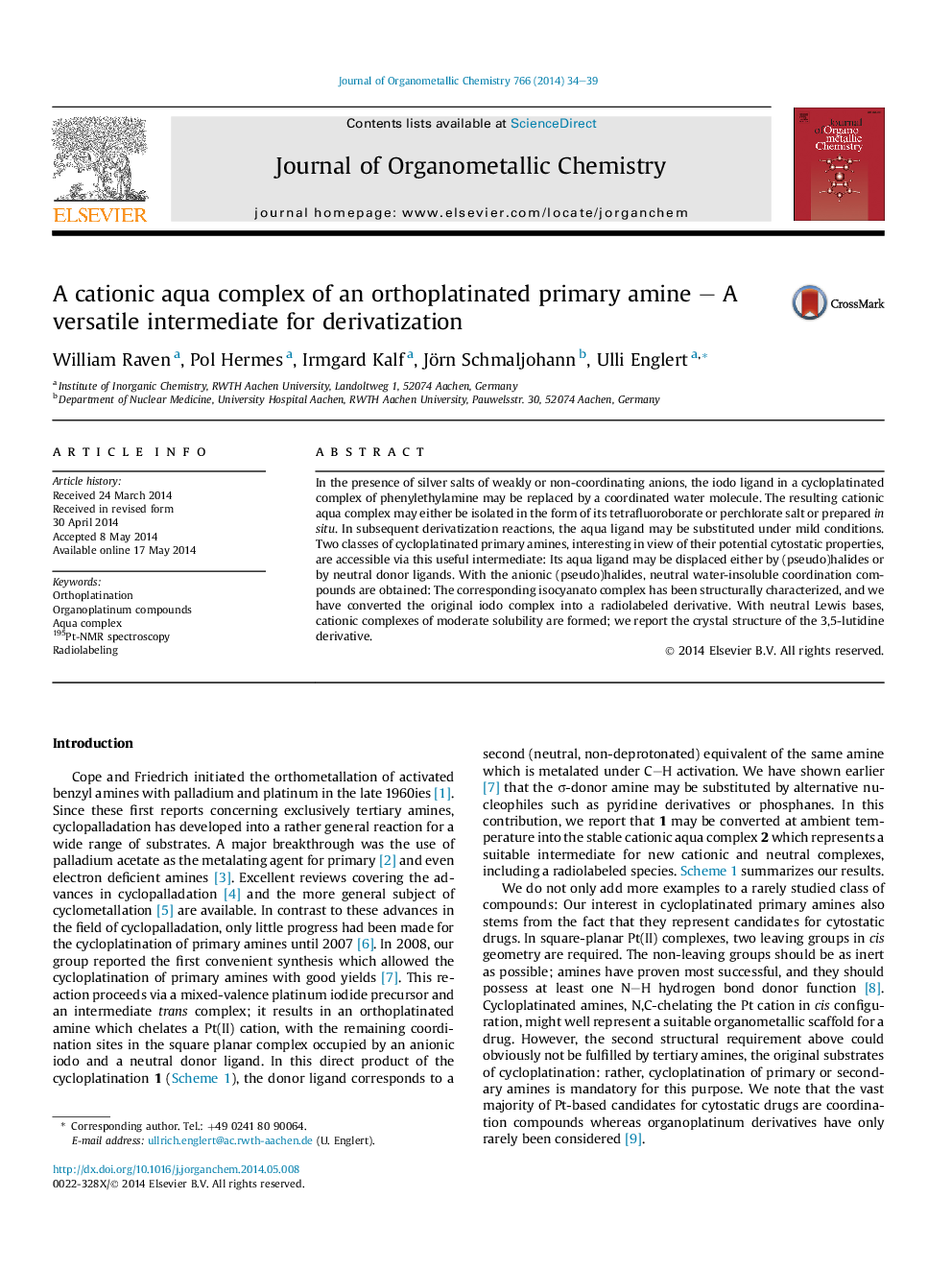| Article ID | Journal | Published Year | Pages | File Type |
|---|---|---|---|---|
| 1325464 | Journal of Organometallic Chemistry | 2014 | 6 Pages |
•Cationic organoplatinum aqua complexes as reactive intermediates.•Neutral and cationic cycloplatinated primary amines.•Radiolabeled cycloplatinated primary amines.•Structural characterization of potentially cytostatic Pt complexes.
In the presence of silver salts of weakly or non-coordinating anions, the iodo ligand in a cycloplatinated complex of phenylethylamine may be replaced by a coordinated water molecule. The resulting cationic aqua complex may either be isolated in the form of its tetrafluoroborate or perchlorate salt or prepared in situ. In subsequent derivatization reactions, the aqua ligand may be substituted under mild conditions. Two classes of cycloplatinated primary amines, interesting in view of their potential cytostatic properties, are accessible via this useful intermediate: Its aqua ligand may be displaced either by (pseudo)halides or by neutral donor ligands. With the anionic (pseudo)halides, neutral water-insoluble coordination compounds are obtained: The corresponding isocyanato complex has been structurally characterized, and we have converted the original iodo complex into a radiolabeled derivative. With neutral Lewis bases, cationic complexes of moderate solubility are formed; we report the crystal structure of the 3,5-lutidine derivative.
Graphical abstractAbstraction of the iodo ligand from a cycloplatinated primary amine with silver salts results in a cationic aqua complex. Two types of potentially cytostatic compounds are accessible via substitution of the coordinated water molecule: (pseudo)halides afford neutral derivatives, including a radiolabeled species, and with N donor ligands cationic complexes are obtained.Figure optionsDownload full-size imageDownload as PowerPoint slide
